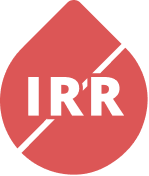Shellac
What is it?
Shellac is a resin derived from secretions of the female lac bug. It can be found in products used throughout the home and industrial setting. It is also edible and used as a glazing agent on candies and pills.
How can I avoid it?
Skin contact with shellac is required for it to cause a rash. Discontinuation of exposure to products containing shellac should result in improvement and/or resolution of your dermatitis. By law, all products made in the US for topical use have the ingredients listed either on the product package or the box that contains it, so check the labeling of your skin care products for this ingredient. If there is not enough information, ask your retailer or contact the company directly. At work, request a Safety Data Sheet (SDS) to help identify potential sources of exposure.
Uses:
- Glaze on candies, especially Jelly beans
- Confectioner’s glaze
- Apple waxing
- Paint primers
- Sealants
- Wood floor and furniture finishes
- Denture production (restoration and moldings)
- Skin care products/Cosmetics
- Hair sprays, gels, tonic and lotions
- Make-up
- Moisturizers
- Lip color and gloss
- Pharmaceuticals (tablet coating, enteric coating, and binding agent)
- Brush-on colorant
- Musical instrument finishes
- Adhesive for leather saxophone keypads
- Adhesive for bicycle tube tires
- Fireworks
Other names for Shellac:
- Lac resin
- Lacca
- Resins, lac or shellac
- Schellack
- Shellac, purified
- Shellac orange S-40
MC4999-43(Dec2024)































